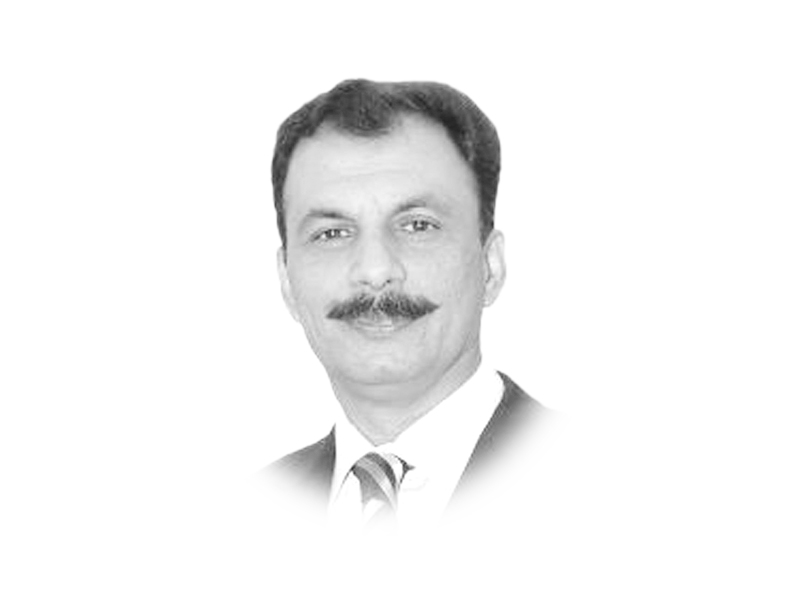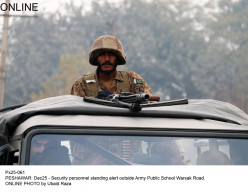
The end of the 13-year-long US combat mission has pushed the Afghan security forces into another bumpy transition. After the recent incidents of terrorism in Kabul, the resignation of the chief of police speaks of the enormity of the challenge and low morale of the Afghan police. Three attacks on foreigners’ compounds in the recent past signify the determination of the planners to mount pressure on Kabul. These attacks not only attracted media attention but also may have convinced donors to rethink the effectiveness of their investment in the Afghan National Police (ANP).
Prior to the USSR invasion, the Afghan police was primarily a dispute settlement apparatus and remained loyal to the president. The ANP is an amalgamation of tribal, communist, military, Taliban, US and European influences. A look at the history of the Afghan police tells us that Turkish and German instructors were hired in the 1930s to modernise it, and during the USSR era, communist imprints were imposed. The Taliban administration made the police a branch of the army. Consequently, the police collapsed as an institution. After dismissing a large number of policemen, the Taliban deployed loyal fighters at police stations. During the last decade, American and European influences were also added. In the recent past, the former Afghan interior minister Mohammad Hanif Atmar conceived police reforms, but owing to irritants within the ministry, he faced difficulties.
The ANP, having a presence in 75 per cent of Afghanistan, consists of the Afghan Uniform Police (AUP), the Afghan National Civil Order Police (ANCOP), the Afghan Border Police (ABP) and the Afghan Anti-Crime Police (AACP). With 90,500 personnel, the AUP is the largest component of the ANP and is present in 34 provinces and is responsible for the maintenance of law and order. With 14,400 personnel, the ANCOP deals with civil disorder. The ABP’s 20,000 members are responsible for ensuring the security of five airports. These four components of the ANP need to be integrated as a unified organisation under a single chain of command.
Since 2005, the US alone has invested $14 billion to train and equip 157,000 personnel. After the departure of foreign troops, training and logistical needs will require donors’ attention. According to the US Institute of Peace, after 2014, the ANP will be allocated $1.6-1.7 billion annually by the US. Following the 9/11 attacks, donors tried to restructure the ANP. Despite pumping hefty amounts, the criminal justice system is yet to prove its worth. Though the ANP has been trained by the developed world, it primarily represents a militarised face, operating within Afghanistan’s tribal fabric and is yet to be transformed into a public service. The priorities of US and European donors were different hence the ANP primarily emerged as a counterinsurgency force. Nowhere in the world does a paramilitary police establish the rule of law. The ANP endures one of the highest police casualty rates globally. According to the Brookings Institution, between 2007 and 2010, 3,290 Afghan policemen were killed.
The ANP’s donors have tried to increase women participation, enlisting 1,551 women within the police force. Owing to escalated insecurity, initiatives dealing with women participation will be difficult to sustain. The recent attack on a woman parliamentarian indicates the enormity of the threat. This insecurity has compelled five million Afghans to opt for refugee status with the brain drain affecting the ANP’s administrative apparatus. Only an improved security situation can attract high quality personnel.
Issues related to ethnicity dominate Afghanistan, also influencing the ANP’s effectiveness. Even though Pakhtuns and non-Pakhtuns have lived together for centuries, the ethnic divide was exploited by the USSR and the US to their advantages. Often, ethnic affiliation becomes a priority compromising the ANP’s professionalism. There are few instances where illiterate and inexperienced police chiefs were appointed on ethnic or political considerations. In the post-2014 scenario, the ANP requires strong political backing but the attainment of ethnic balance will be a lofty ideal to achieve.
After the exit of foreign troops, the ANP’s real test will be the establishment of the rule of law and protection of lives and property. Its effectiveness will also be dependent on the availability of finances. The equipment presently being used will become obsolete within the next five years. Prior to 2009, recruits were deployed without induction training. This hasty recruitment improved the ANP’s numerical strength but compromised its training, performance and image. Illiteracy badly hampered the reformation process as majority of the recruits were unable to read and write. This means that talent is being utilised for the maintenance of order instead of law enforcement. Traditionally, those who failed to join the army were selected in the police force. To improve literacy in 2011, the Literacy Empowerment for Afghan Police programme was introduced.
To prevent corrupt practices is another gigantic challenge the ANP management confronts. In addition, wages are too low and delayed payment is rampant. The phenomenon of ‘ghost policing’ also requires immediate remedial measures. Currently, the management just pockets the salaries of those who are enlisted on paper but may not actually be active in service. According to an assessment made in 2010, the absenteeism rate was assessed to be between 20-25 per cent. According to Transparency International during 2014, Afghanistan was ranked 172 out of 174 nations amongst the most corrupt in the world. To enable the induction of the best talent in the ANP, it is imperative to make proper rules and improve wages. The militarised face of the interior ministry is another serious concern. In addition, the brief stints of interior ministers also affect police performance. During 2010-14, the interior ministry was rotated among four personalities.
South Asia primarily follows the imprints of British policing. Post-9/11, interventions led by the US and its allies tried to infuse their ideals into a war-affected tribal society. Without a fully operational criminal justice system, it is difficult for the ANP to satisfy the public. Another growing concern is the escalating attrition rate. Since 2011, it has been registered at 25 per cent. Intelligence collection is another missing link, hence intelligence-led policing should be a priority area. Since the ANP has been established as a counterinsurgency body, its transformation into a law enforcement agency will be another enormous task.
The ANP’s structural adjustment needs to be synchronised with Afghanistan’s sociocultural fabric and it should transform from being a paramilitary force into a national police service. While a paramilitary police needs a strong command structure, it should be noted that a professional police requires public oversight and responsiveness. Absence of a public safety apparatus is another missing link. Without the continued cooperation of donors, the continuity of institutional development will be difficult.
Reporting to a central authority, crime prevention, record-keeping and investigation require more efforts at the provincial level as there are still missing links between command, strategy and implementation. The ANP is an organisation where the command is strong but its capacity is weak, therefore, achievement of ideals becomes difficult. After the US withdrawal, the real challenge will be the transition and transformation of the ANP. It remains to be seen whether the ANP retains the imported policing model or reverts to the fragmented traditional system.
Published in The Express Tribune, February 17th, 2015.
Like Opinion & Editorial on Facebook, follow @ETOpEd on Twitter to receive all updates on all our daily pieces.
































































COMMENTS (5)
Comments are moderated and generally will be posted if they are on-topic and not abusive.
For more information, please see our Comments FAQ